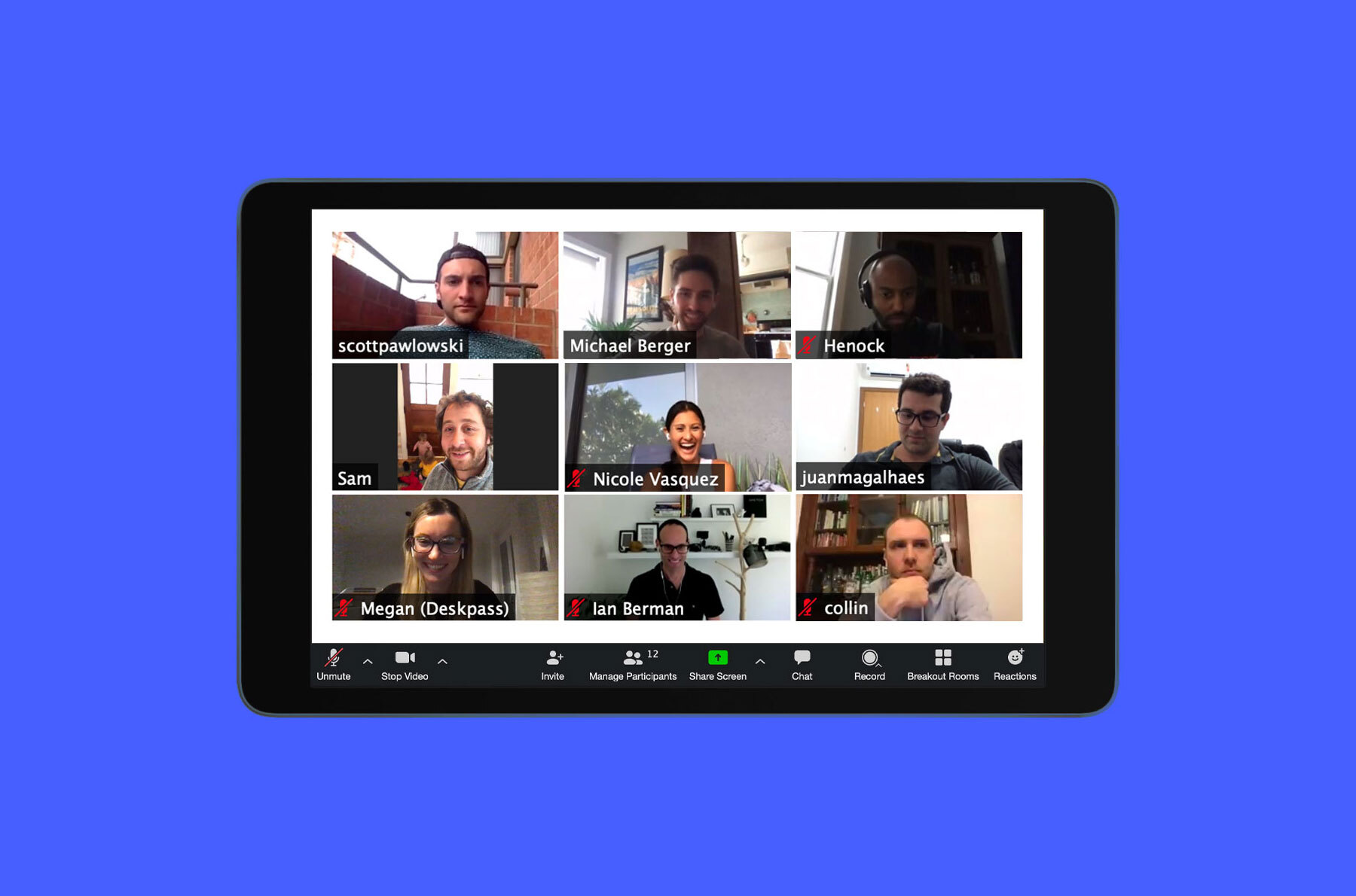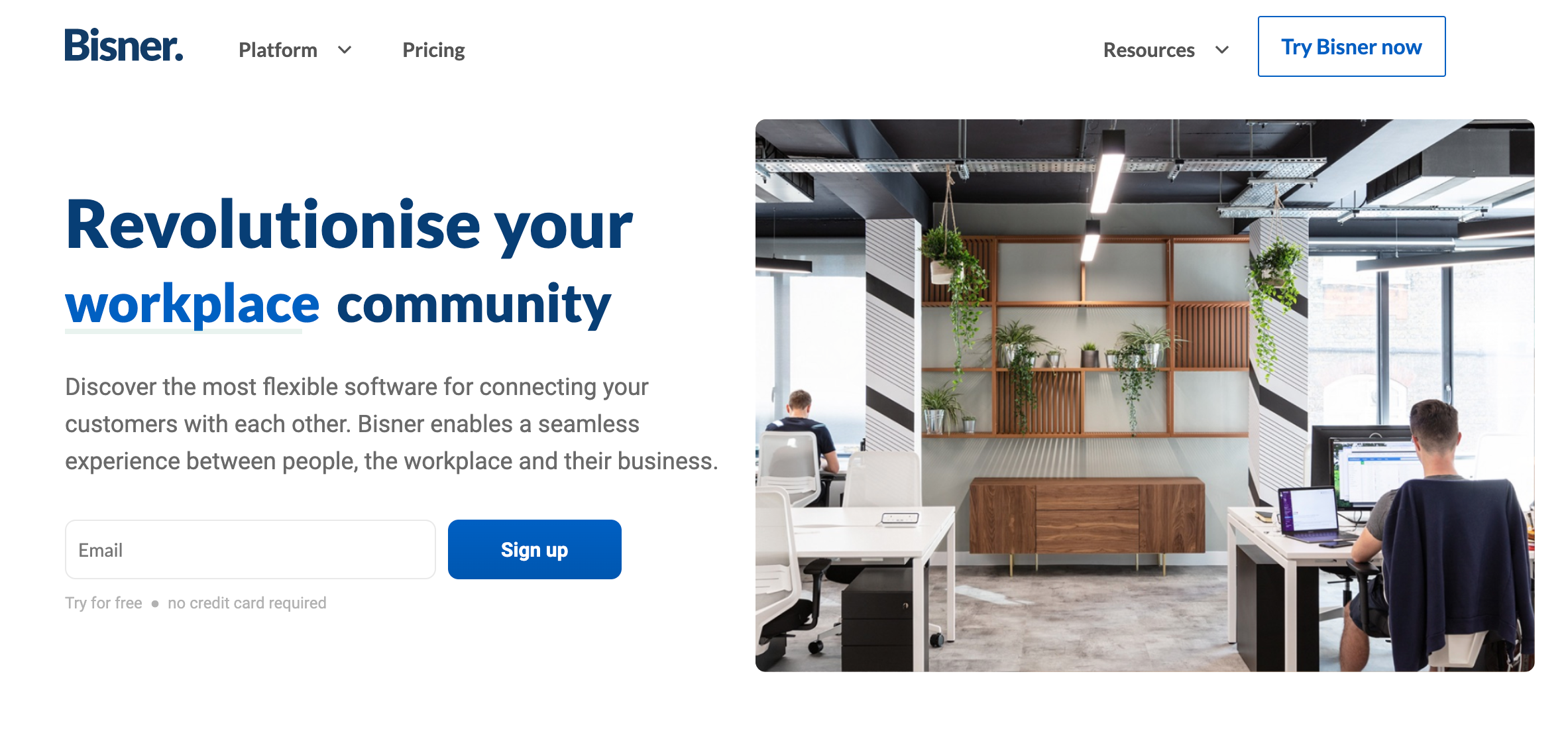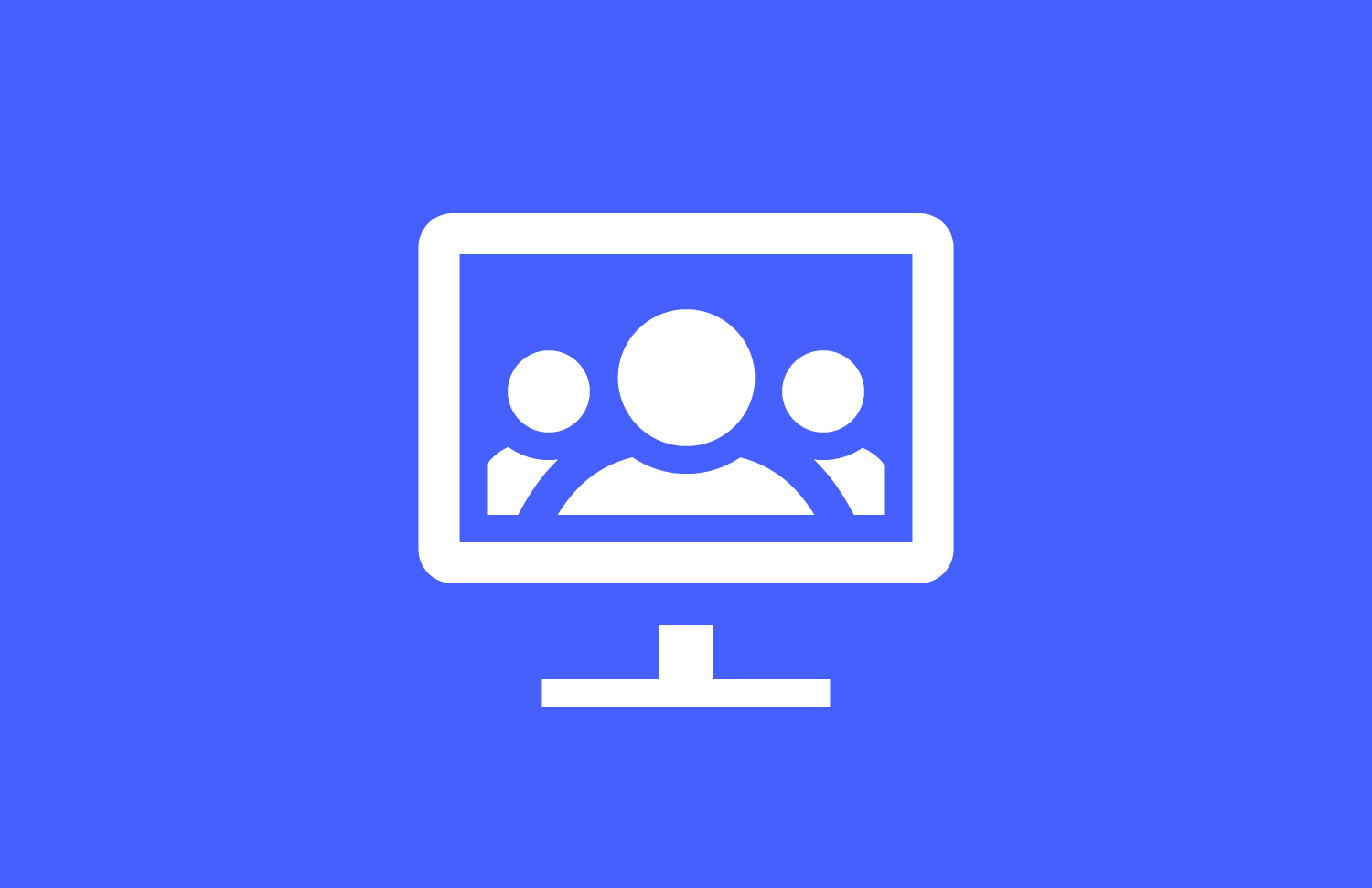The past few months have been challenging to everyone, and while social distancing has created physical limitations among groups and coworkers, it’s ultimately allowed for strong social and virtual communities to form. We put together a guide for companies planning to launch a virtual community (as we did), sharing our top learnings along the way.
Define the goals of your community
Before officially launching our Online Deskpass Community, we had been working on it behind the scenes for over a year. That said, once Covid-19 hit and our members were affected (as well as the rest of the world), we knew that rolling out our virtual community was the best thing to do for our members, even though it wasn’t 100% ‘ready.’
During the next 2-3 months, we invited members to connect with other remote workers in their city and beyond (Deskpass is available in 20 cities across the country, and growing). Members also gained access to a series of free virtual coworking sessions, webinar-style expert chats and networking events.
Defining goals for your community, even if those may change over time, is crucial because your goals will guide all your decisions throughout the building process.
For example, we began planning for our community before Covid hit, so when we launched we had to adjust our short-term goals accordingly, while knowing that once Covid passed we’d return to our original goals.
Goals for launch (during Covid):
- Take the experience and benefits of coworking online, so Deskpass members could still have structure, professionalism, and accountability while working from home
- Host a virtual event daily: coworking, expert chats, networking, or social
- Provide Covid-19 specific resources and opportunities
Long Term goals (post-Covid):
- Provide an online community where Deskpass members can be supported in their remote lifestyle through connection to other remote workers, the ability to coordinate their own coworking meetups, discover local events and job opportunities, and access members-only benefits to remote work products and services.
- Empower Deskpass members to share their coworking tips with other members, review workspaces, and provide direct feedback and suggestions to the Deskpass team.

Define roles and responsibilities
Identifying who does what, and why, should be determined early on.. In our community, myself and our company’s co-founder are admins, as are other team members in our leadership team. On the platform we chose, admins have access to a management portal that allows us to easily create or edit posts, events and groups, as well as message members directly.
As a member of our community, you can post to the main newsfeed and groups in which you are a member, reply to members, tag members in their replies, view events and join groups (currently, only admins can create new events or groups). We recently started allowing members to send and receive direct messages to other members as a form of virtual networking.
Set guidelines
Setting and enforcing guidelines helps everyone navigate the community, and if done well, works to create a safe space for all members. We chose to display our guidelines in a very visible location (in our case, community guidelines are featured on the main community menu). We also continually reference our guidelines via pinned posts in all groups and newsfeeds.
Our Community Do’s and Don’ts are written with our community members in mind, and expressed in our brand voice.
- Keep it kind: Treat all members of the Deskpass community with courtesy and respect. Profanities and other aggressive language won’t be tolerated. If you have a problem with something another member wrote, please report this to us directly so we can help resolve. You can reach our customer support team quickly during business hours by phone, live chat on our website, or via email at: [email protected].
- Sharing is caring: Newcomers are always joining our Deskpass community and we love learning about you and what you do. Tell us who you are, how you found out about Deskpass, why you decided to join, your favorite space to work, that sort of thing.
- Questions are cool: Uncertain about anything? Just ask our Community Director, @Megan McDonough. She’s here to answer all things Deskpass and community and members are always welcomed to chime in with tips from their own experience.
_______________
- Don’t spoil it with spam: Aggressive advertising and overt self-promotion is not acceptable and will be removed. If your company or services are relevant to a conversation, then of course we encourage you to share helpful resources with others when asked.
- Promo patrol: We don’t want to be the promotions patrol here, but if the event you’re posting about isn’t accessible to Deskpass members and/or isn’t available in any of the cities where we operate, please don’t. It will create confusion or FOMO and nobody wants that.
- Trolls, take a hike: Trolls are pretty easy to spot; they’re the ones messaging or constantly designing ways to annoy people in the group. While tempting, do not feed the troll. Instead, ignore and report to our Community Director. She’ll take it from there.

Choose a platform that propels those goals
Once you have a clear idea of who you want to welcome into your community and why those members would want to be there, it’s smart to ‘shop around’ to find the best platform to achieve that mission. Make sure in advance that your community platform provides all the features required to meet your community goals.
Our virtual community is built on Bisner, a flexible software for connecting your customers with each other. We chose Bisner because their software allows us to engage with our community in a variety of interactive ways, such as newsfeed posts, members-only groups, event listings and direct message capabilities. These features allow us to achieve our goals of member connection, communication, and information sharing.
If you’re not ready to run your community on a platform like Bisner, there are other options such as Facebook, Slack, Mighty Networks, Kajabi, and more. Alternatively, you could skip the platform entirely and simply set up recurring Zoom or Google Meet calls and communicate via email, and use shared documents in Google Drive.
There is a saying in the design world: “Form follows function” which means the form that something should take, should be decided after the function of what that thing will do is determined. So make sure you first know what functions your community should be able to do, then you can choose your tech stack accordingly.

Come from a place of service
If a member joins your community, it’s likely because they identify with your purpose, or they already find value in your brand so they trust your community will also be valuable. As such, you have to earn their participation by ensuring the community satisfies their needs, not yours.
One way of doing this is to create a Benefits program specifically tailored to your audience. In our case, we chose to collaborate with 7 companies we felt aligned with the needs and lifestyle of our members, and that were easy to redeem so our members could start utilizing them immediately.
For example, we’ve partnered with FreshBooks—an all-in-one small business invoicing and accounting solution where members can send invoices, track time, manage receipts, expenses and accept credit cards, because many of our Deskpass members are freelancers who don’t benefit from a financial advisor and/or spend a good chunk of their time being bookkeeper for their own small businesses.
We also partnered with General Assembly—a pioneer in education and career transformation, specializing in today’s most in demand skills—because access to higher learning and professional development in remote work industries, is in line with our brand’s core values and company mission. Our members get 25% off any paid workshop and these are offered virtually.

Create a safe space to collaborate
Looping back to our community goals, curating a safe space is our highest priority. Our community is free and available to Deskpass members and our team is active on the platform to ensure that our Rules and Regulations are maintained at all times.
One way to encourage members to feel safe and welcomed is to offer them the chance to introduce themselves to the community. Within our community, we tag new members in a welcome post, which gives them the opportunity to tell other members more about what they’re working on and what they are most looking forward to experiencing within our platform.
We’ve also found that having active moderators—in our case, our Co-Founders Sam and Nicole and our Community Director (me)—active within the community on a daily basis. We genuinely want to be here and interact with our members in this way, and it gives us clear insight on how we can better improve our product and connect with our members.
Within our community, we’ve created a group where members can submit feedback on anything Deskpass-related. We want to be accessible to our members and to let them know that their voices are heard.

Run events to expand and elevate learning
In a perfect world, your engagement is through the roof from the very beginning. Realistically, though, it’s going to take time to not only encourage community signups, but to motivate them enough to actively participate.
Since launching the Online Deskpass Community, our goal continues to be quality over quantity. We want to give members a safe space to talk about coworking, as well as other work-related challenges in their lives. We value collaboration over competition any day.
That said, we found it very effective to test out a couple different virtual event types and stick to a recurring schedule. Based on member participation and interest, we would either tweak those event types and/or change the frequency of when they are offered.
It takes time to build up a cadence, so take your time and really listen to what your members are saying. Nothing is set in stone; you can always change your strategy and offerings to better suit your members’ needs.
Empower your champions
When it comes to engagement within a community, empowerment is everything. Early on, we took notice of which members were most active on our community platform and we sought to find ways to reward their participation.
Encouraging early adopters or frequent posters to become ambassadors is one route you can take. This gives them agency to curate their own conversations with other members and to create content that is meaningful to them. Having posts from ambassadors often encourages other people to engage, perhaps more so than posts from your company’s community manager.

Keep your community alive
A community is a living thing that needs continual nurturing, and room to grow and evolve. Initially, your company’s community manager will likely be the one taking charge, asking questions to the community and bolstering overall engagement. This is totally okay, and in many ways, it allows members to slowly get acquainted with how the community is run.
Eventually, you might want to consider creating an ambassador program or something similar, in which a highly-engaged member takes on a leadership role within the community. If this hasn’t happened yet, it might be due to timing or because your company hasn’t yet provided the fundamentals to do so.
If its not working
Growing a community is hard work and it’s natural to have ups and downs in the beginning. If you’re feeling that something is missing, or not quite working the way you had hoped, this is an opportunity to take a look under the hood and also talk with members to get honest feedback.
First, take a look at who is posting and how often. Does it feel safe to post? Is there a common identity established? Is this already being done somewhere else but better? All of these questions will better help you improve your company’s community.
Next, survey current members and ask what they want out of the community and how the community could provide those specific outcomes for them. Ask open-ended questions to encourage them to provide detailed answers, and don’t be afraid to ask the hard questions to find out exactly what is the reason they’re not actively participating in the community. Based on the responses you receive, you can revise your community practices accordingly.
Most importantly, make sure you continue to track your unique key metrics to understand what’s working and what’s not. For example: is the number of posts, comments, or new topics created in your community continuing to increase?
Building and growing a virtual community is not easy and will require both time and consistency. Put your members first, be open to feedback, and keep at it.

Get a complimentary $250 Deskpass credit when you sign up for a Teams account today.